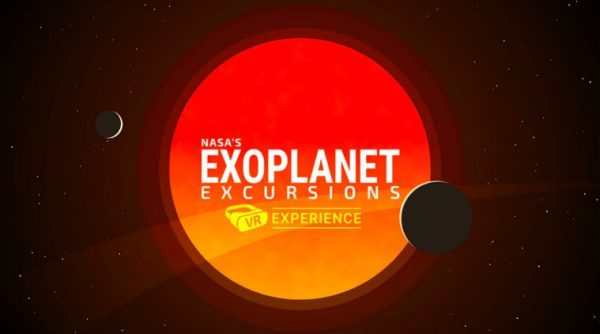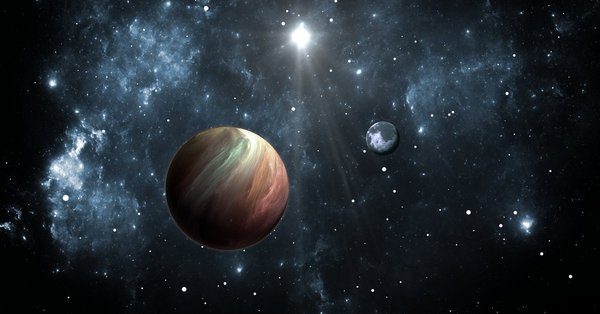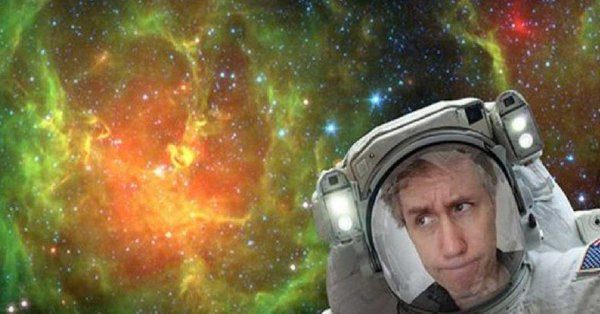NASA Launches Two New Virtual Reality Apps For Taking Selfies in Cosmic Locations
NASA has launched two virtual reality apps that let users generate snapshots of themselves in various cosmic environments such as the Orion Nebula and the Milky Way (the earth’s home galaxy) galaxy and one which you can use to explore the TRAPPIST-1 exoplanet system. These are the NASA Selfies app and the Exoplanet Excursions VR app that have been launched on the 15th anniversary of the launch of the Spitzer Space Telescope. The products have been designed around the incredible discoveries and images that were unveiled by the Spitzer telescope.

The most intriguing of the new apps is undoubtedly the Exoplanet Excursions VR app which is available on both HTC Vive and the Oculus Rift headsets. The app provides users with an incredible exploration of various distant stars in virtual reality. Through this VR app, you can get a 3D guided tour through the TRAPPIST-1 planetary system and see the artists’ impressions of the various earth-sized planets in this exoplanet. You can even sample out the comparisons between these and the planets that are close to our home star. Users will navigate around these planets while surrounded by the eerie blackness of space and the distant lights of the stars.

TRAPPIST-1 is the only exoplanet that has been discovered so far which is host to some seven earth-sized planets. Spitzer was highly instrumental in the discovery of these planets and provided valuable information that has been critical to learning more about their likely composition. The TRAPPIST-1 planetary system is so farther away to be observable by the telescopes we have in place so far so the VR impression provides only an artist’s impression on what this planetary system might look like. These impressions have been created from the data that was provided by the Spitzer telescope along with various other telescopes that have since been deployed in studying the TRAPPIST-1 system.
The virtual reality app will be available on the Spitzer mission website and later on, in the Oculus store. There will also be a 360-video on the Spitzer Youtube channel where users can explore the TRAPPIST-1 system in virtual reality via their smartphone or desktop computers. You will also be able to view this via a smartphone-based 360-degree viewer such as the Google Cardboard.
The other app is the NASA Selfies, an iOS and Android app that allows users to stage self-portraits in the backdrop of some of the more well known galactic landmarks like the Orion Nebula and our own Milky Way. This is a fun entertaining app though not one you might put into any long term use. You can use the Selfie app to capture snapshots of yourself while wearing a virtual spacesuit and pose in front of a host of stunning cosmic locations. The app also gives information on the science behind impressive constellation of cosmic images in the VR environment.

NASA Selfies provides up to 30 images that you can choose from all of which were captured by the Spitzer Space Telescope. The agency plans to incorporate more images that it will capture in other science and human spaceflight missions into the virtual reality app.
https://virtualrealitytimes.com/2018/08/27/nasa-launches-two-new-virtual-reality-apps-for-taking-selfies-in-cosmic-locations/https://virtualrealitytimes.com/wp-content/uploads/2018/08/NASA-Virtual-Reality-Apps-600x314.jpghttps://virtualrealitytimes.com/wp-content/uploads/2018/08/NASA-Virtual-Reality-Apps-150x90.jpgVirtual TravelNASA has launched two virtual reality apps that let users generate snapshots of themselves in various cosmic environments such as the Orion Nebula and the Milky Way (the earth’s home galaxy) galaxy and one which you can use to explore the TRAPPIST-1 exoplanet system. These are the NASA Selfies...Sam OchanjiSam Ochanji[email protected]SubscriberVirtual Reality Times - Metaverse & VR
